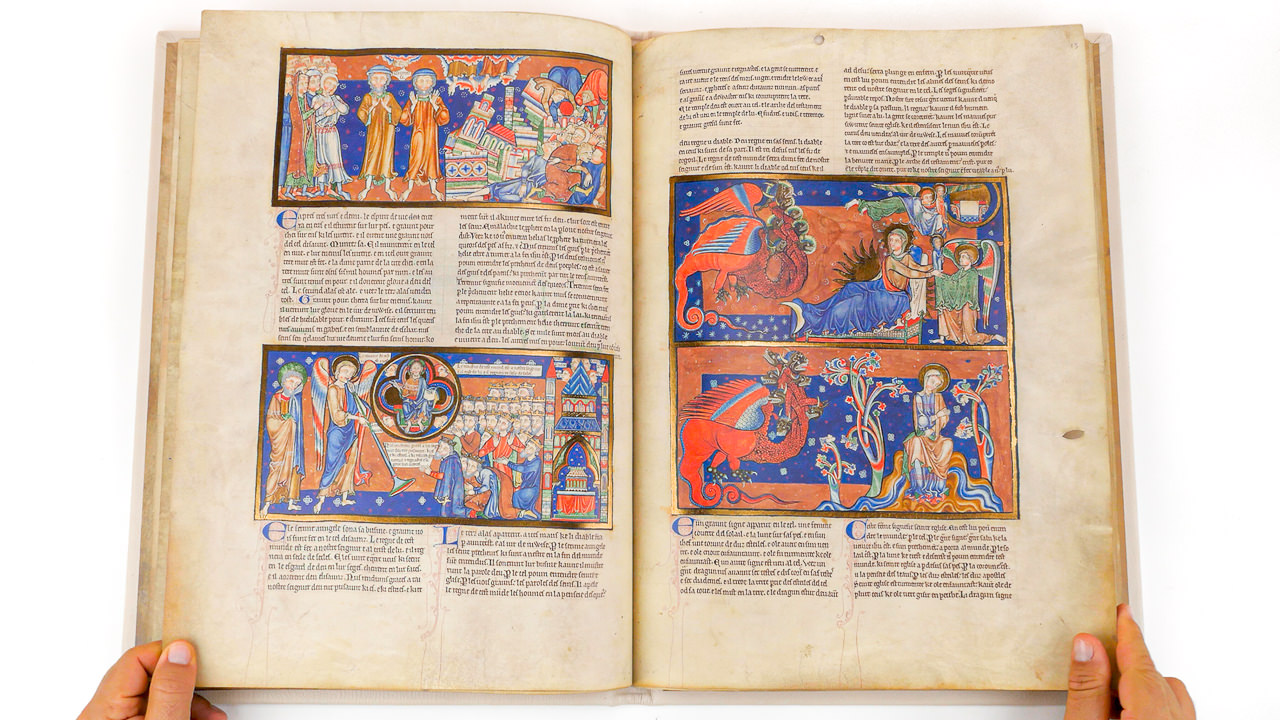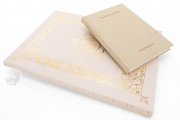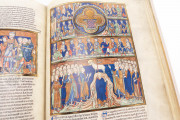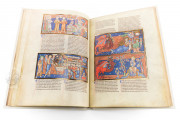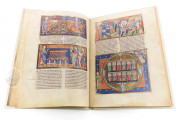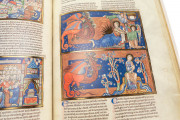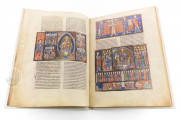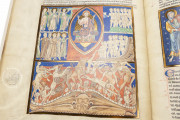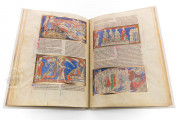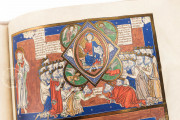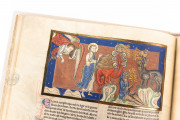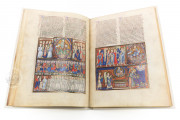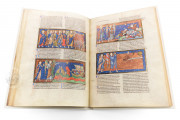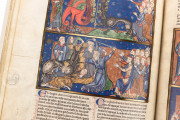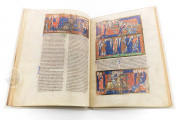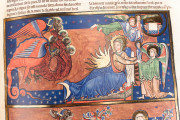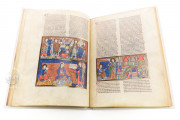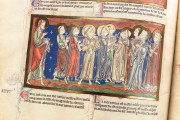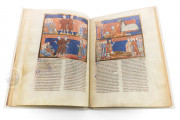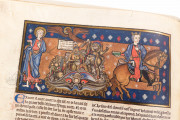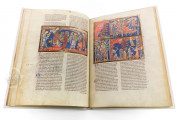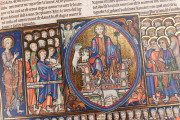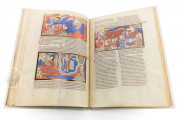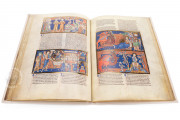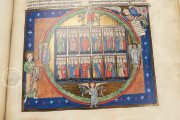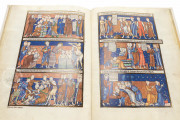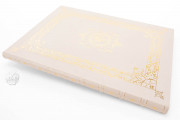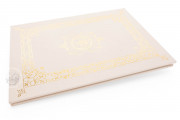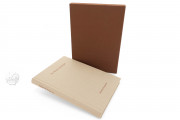The Trinity Apocalypse—named for its repository, Trinity College Library, Cambridge—is arguably the finest of the English illuminated Apocalypses. Probably made in southern England around 1255-1260, it features a pictorial biography of Saint John the Evangelist, purported author of the Christian biblical book of the Apocalypse. That series of thirty scenes is presented in nine full-page and two smaller miniatures at the beginning and end of the book. In between is a fully illustrated Anglo-Norman version of the Apocalypse, with commentary and sixty miniatures. The manuscript's large size, sumptuous materials, and superb aesthetic quality suggest it was made for a very wealthy patron.
The paintings, mostly the work of two artists, are characterized by tall, thin figures with voluminous patterned drapery and expressive gestures and faces. Halos, frames, and some backgrounds are of tooled gold leaf. The remaining backgrounds are of intense color decorated with patterns in white and red.
A Saint's Life in Pictures
The Trinity Apocalypse stands out among the dozens of surviving illuminated Apocalypse manuscripts made in England and Northern France in the thirteenth and fourteenth centuries for its extensive series of scenes illustrating the life of Saint John. The sequence at the beginning of the book extends from the saint's early preaching to his banishment to Patmos (fols. 1r-2r). At the end of the book, the story continues with the death of the Roman emperor Domitian and extends over twenty-two scenes to John lowering himself into his sarcophagus (fols. 28r-31v). Each scene is explicated by inscriptions in Anglo-Norman, the vernacular of thirteenth-century England.
Terrifying Scenes of Fire, Hail, and Locusts
The lion's share of the manuscript's text and imagery is given over to John's vision of the events leading to the Second Coming of Christ, including a series of cataclysmic episodes of death and destruction unleashed by angels blowing trumpets and pouring from vessels. Another series of miniatures chronicles the actions of a red seven-headed dragon and a seven-headed spotted beast and a false prophet in the form of a horned and taloned beast, all vividly portrayed. Inscriptions mostly in Anglo-Norman and a very few in Latin help to convey the paintings' messages.
Singular Text
The Trinity Apocalypse is remarkable for presenting in the vernacular both the biblical text and excerpts from a commentary on the text by one Berengaudus. The text was written in Gothic Textualis by one scribe mostly in two columns, except when the commentary on a given portion of the text is especially long and is continued in long lines. Pen-flourished initials—blue with red flourishing or red with blue flourishes—introduce each section of the text, and the biblical sections are numbered in red and blue Roman numerals.
Speculation about the Patron
The manuscript was probably made for a woman, as suggested by the prominence of a woman among the elect in two miniatures (fols. 14v and 17v). The manuscript's large size and sumptuousness have led to speculation of a royal patron, and Eleanor of Provence, consort of King Henry III of England, has been suggested as a candidate. The current binding, which dates from the mid-sixteenth century, is of white leather over pasteboard with gold tooling. It boasts the royal arms of England and France quartered. The manuscript could have been, but not necessarily, in royal possession at the time.
The first identifiable owner is Anne Sadlier, who may have gotten it from her father, Edward Coke (1552-1634), who had a sizable collection of medieval manuscripts. An inscription in the manuscript states that she planned to entrust the manuscript in 1649 to Ralph Brownrig (1592-1659), Bishop of Exeter, for eventual donation to Trinity College Cambridge. In the event, however, she donated the manuscript directly to the college in 1660.
We have 1 facsimile edition of the manuscript "Trinity Apocalypse": Trinity-Apokalypse facsimile edition, published by Faksimile Verlag, 2004
Request Info / Price
